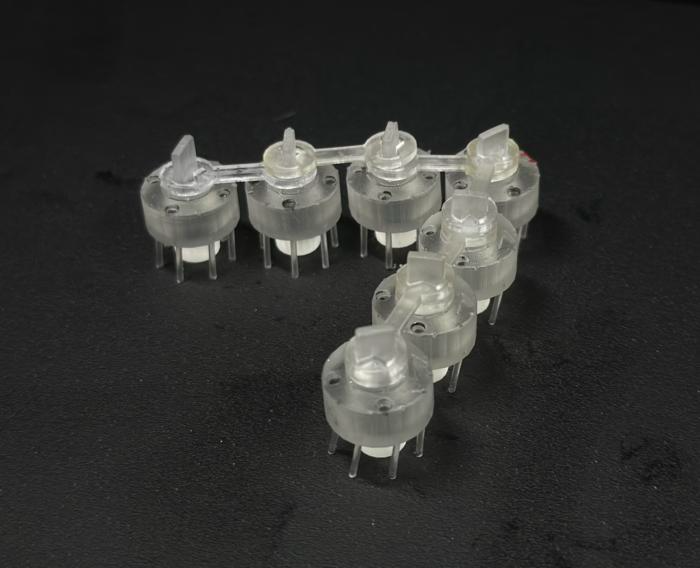Research teams from Seoul National University and Harvard University created a novel, bio-inspired swarm robot system capable of movement, exploration, transportation, and cooperation, all achieved without the need for intricate sensors or a central control unit. The study was published in Science Advances.
 A V-shaped link-bot composed of self-propelled particles connected through chain-like links. Image Credit: Seoul National University College of Engineering
A V-shaped link-bot composed of self-propelled particles connected through chain-like links. Image Credit: Seoul National University College of Engineering
The study was spearheaded by Professor Ho-Young Kim, Dr. Kyungmin Son, and master’s student Kwanwoo Kim from SNU’s Department of Mechanical Engineering, alongside Professor L. Mahadevan and Dr. Kimberly Bowal at Harvard. Their innovative method involves connecting simple, active particles into chain-like formations that can perform complex tasks without requiring advanced programming or artificial intelligence.
Conventional swarm robots, often composed of drones or individual small robots, typically depend on advanced technology, including sophisticated sensors, wireless communication, and detailed control algorithms. While these systems are powerful, they often face limitations related to size, material options, cost, and sensitivity to environmental factors.
Similar to how ant colonies or cell groups exhibit intricate collective actions using only basic individual units, the research team developed a novel robot inspired by this principle, termed "emergent collective behavior." Their "link-bot" solution connects small, self-propelled particles in a V-shaped chain, naturally resulting in coordinated, life-like movement without any embedded intelligence.
These link-bots utilize simple mechanical constraints to govern the movement and rotation of each particle. By altering the geometry of the links, the system can adjust its form and behavior to suit various tasks or surroundings.
The team demonstrated that link-bots can perform various actions, including forward movement, stopping, and directional changes, simply by modifying their link configurations. They can navigate narrow spaces, block openings, and even encircle and transport objects. Furthermore, multiple link-bots can collaborate to execute tasks beyond the capability of a single robot.
To better comprehend and predict these behaviors, the researchers created a computational model that simulates the impact of different chain designs and particle numbers on movement. This enables a systematic investigation of the link-bot's mechanical principles.
The team showcased that these robots can perform sequences of complex tasks, such as searching, transporting, and cooperating, without depending on sensors or a central control system. This unlocks new potential for affordable, energy-efficient robotics in applications like disaster response, challenging terrain logistics, environmental monitoring, and more.
Journal Reference:
Son, K., et al. (2025) Emergent functional dynamics of link-bots. Science Advances. doi.org/10.1126/sciadv.adu8326